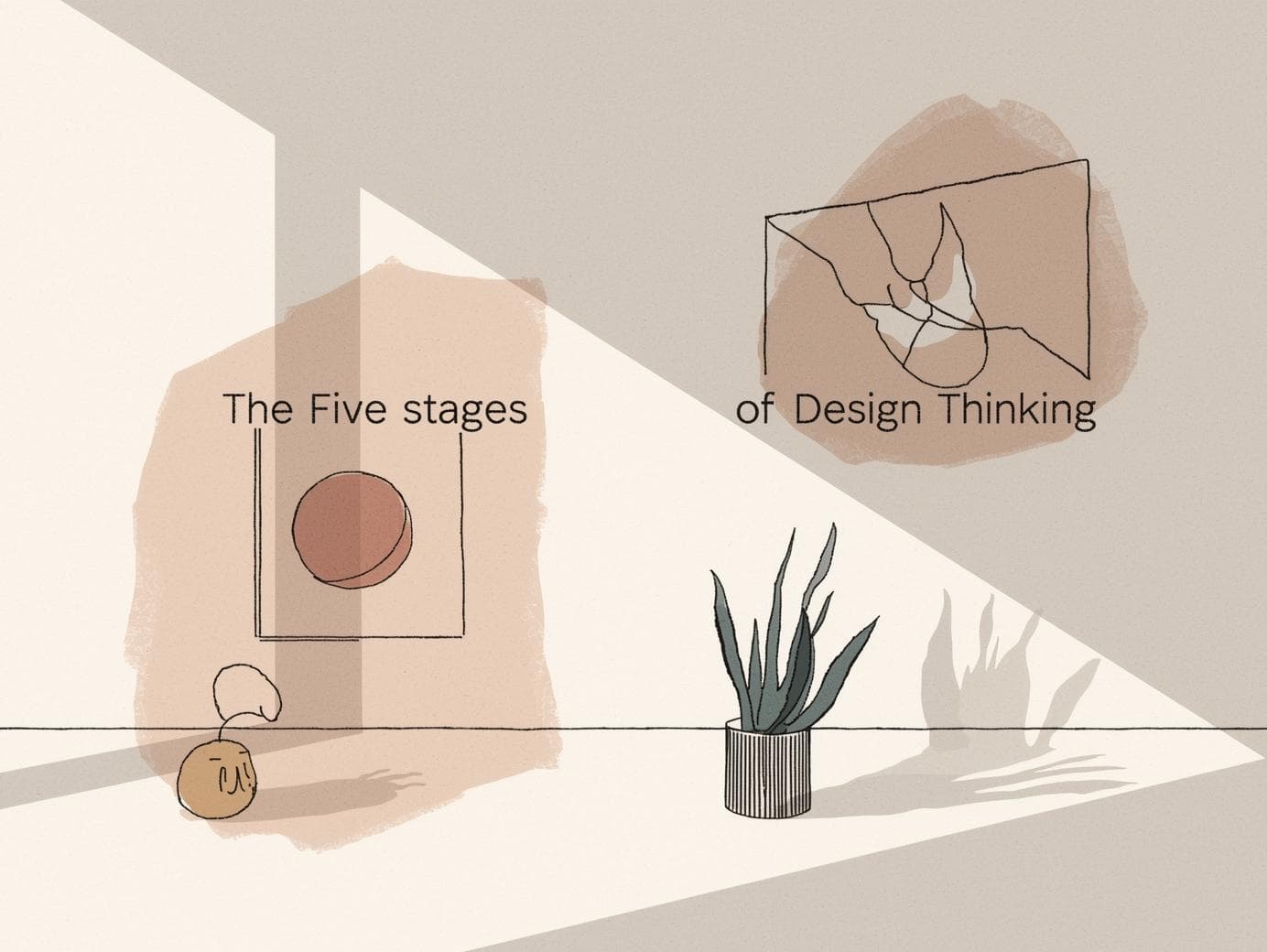As AI emerges, people feel unsettled about their jobs—and they're right to. We're watching technology generate solutions to almost anything. But here's the real question: can AI tackle problems the way humans do—through messy, non-linear thinking?
Design thinking thrives on chaos. You empathise with users, challenge assumptions, then leap sideways to redefine problems entirely. It's a non-linear, iterative process that teams use to understand users, challenge assumptions, redefine problems and create innovative solutions. What is Design Thinking? — updated 2025 | IxDF
AI excels at pattern recognition and rapid iteration. It digests data, surfaces correlations, and generates options fast. This makes it superb at optimization, synthesis, and scaling existing design patterns. But breakthrough moments? They still most often come from the human capacity to make unconventional leaps — to see a problem from a different angle and reframe it.
Design thinking vs. AI — different strengths
- AI: fast pattern recognition, large-scale synthesis, and repetition without fatigue.
- Humans: curiosity, empathy, and the ability to tolerate ambiguity and make counterintuitive connections.
Design thinking is not a tidy checklist. It is an approach that deliberately courts uncertainty: observing, interviewing, prototyping, failing fast, and then reframing the problem. Machine learning models are extraordinary at iterating inside a problem definition; they are less capable of stepping outside it and asking whether the problem itself is the right problem to solve.

Why reframing matters
Reframing a problem changes the solution space. Consider a product team trying to increase sign-ups. AI can optimise the sign-up funnel, but a human-centred insight might reveal sign-ups are low because people don’t trust the wording on a privacy prompt — or because the product solves the wrong problem for the wrong audience. That insight shifts strategy, not just tactics.
Practical collaboration patterns
- Use AI to expand your set of options quickly. Let it generate alternatives, then evaluate them through human lenses: ethics, context, and long-term viability.
- Run human-led discovery sessions early. Prioritise interviews and observation before you ask AI to synthesise solutions.
- Prototype to learn, not to prove. Rapid, low-fidelity prototypes reveal assumptions and enable reframing.
- Treat AI as an amplifier, not a replacement. It scales and accelerates, but it should be guided by human judgment.
The human advantage
Design thinking demands empathy, curiosity, and the courage to question assumptions. Those are messy skills — hard to formalise, even harder to encode. While AI will continue to transform how we design and build, the ability to reframe problems and spot new opportunities remains a distinctly human skill.
The goal is to gain a deep understanding of the users and their ideal solution. What is Design Thinking? — updated 2025 | IxDF
The future is hybrid: teams that pair fast, data-driven AI workflows with human-centred reframing will create the most meaningful breakthroughs.
